VERY RARE! 1965 Apollo Program John F. Kennedy Space Center “MASTER PLAN - SPACE CENTER GENERAL HEATING PLAN” NASA Expansion Blueprint*
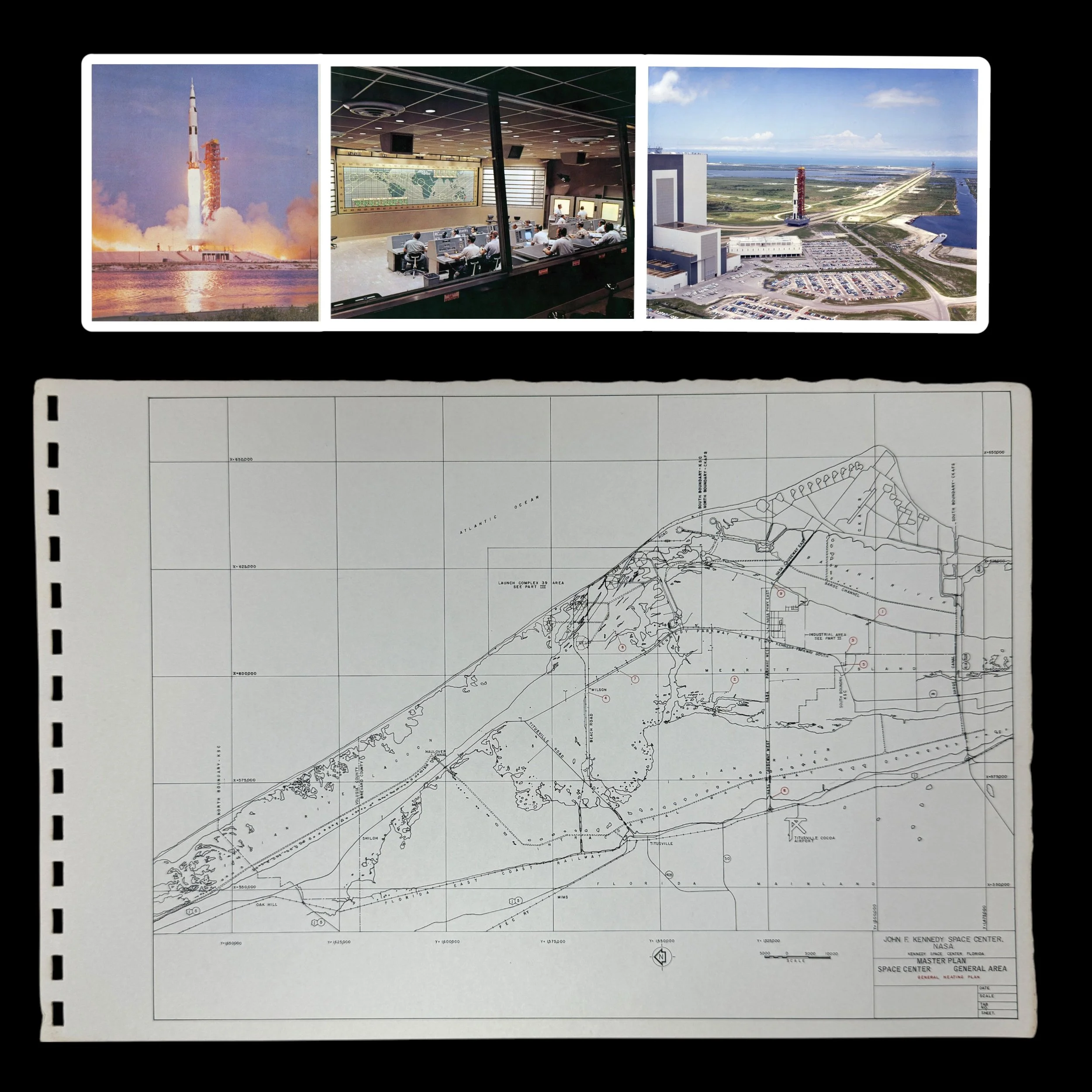
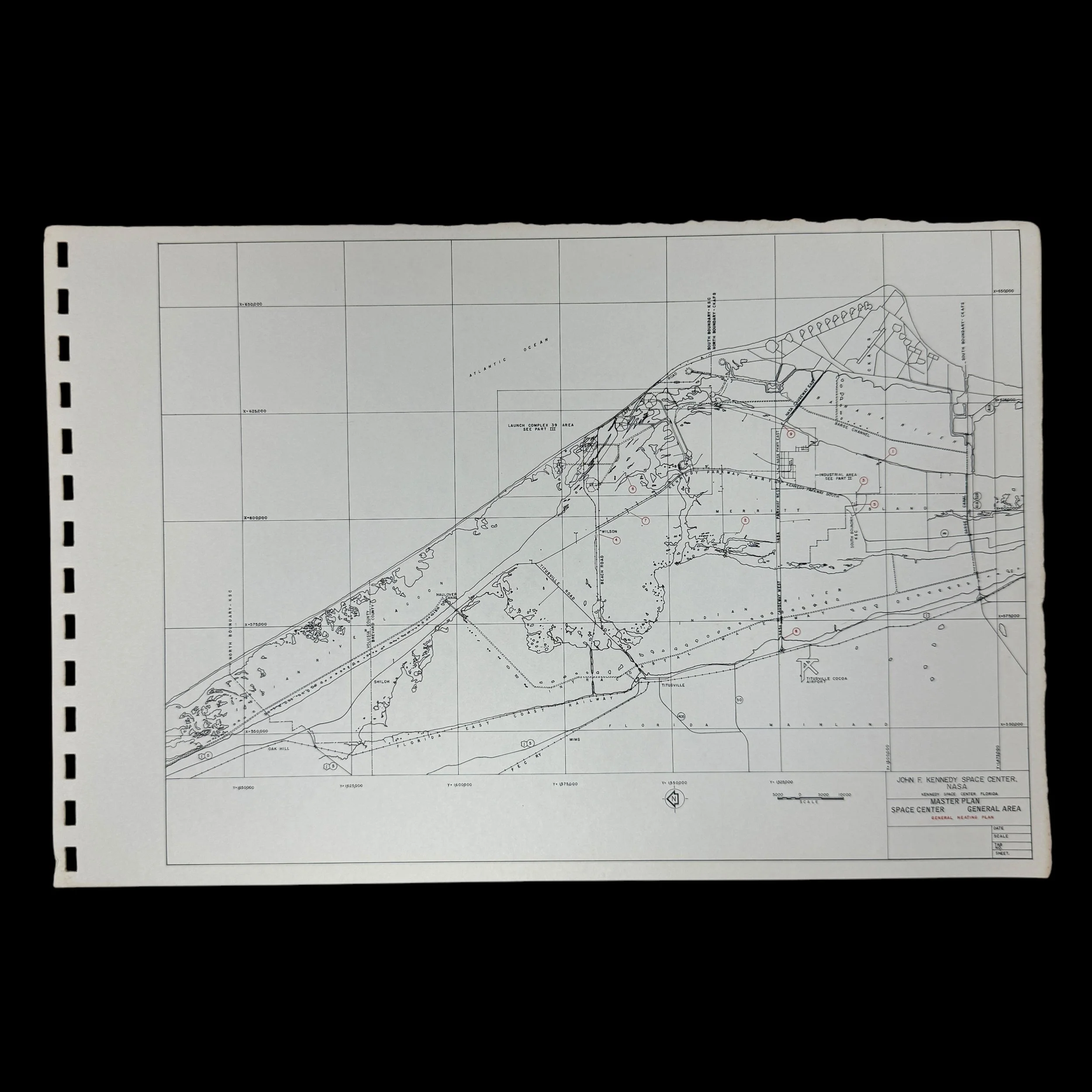
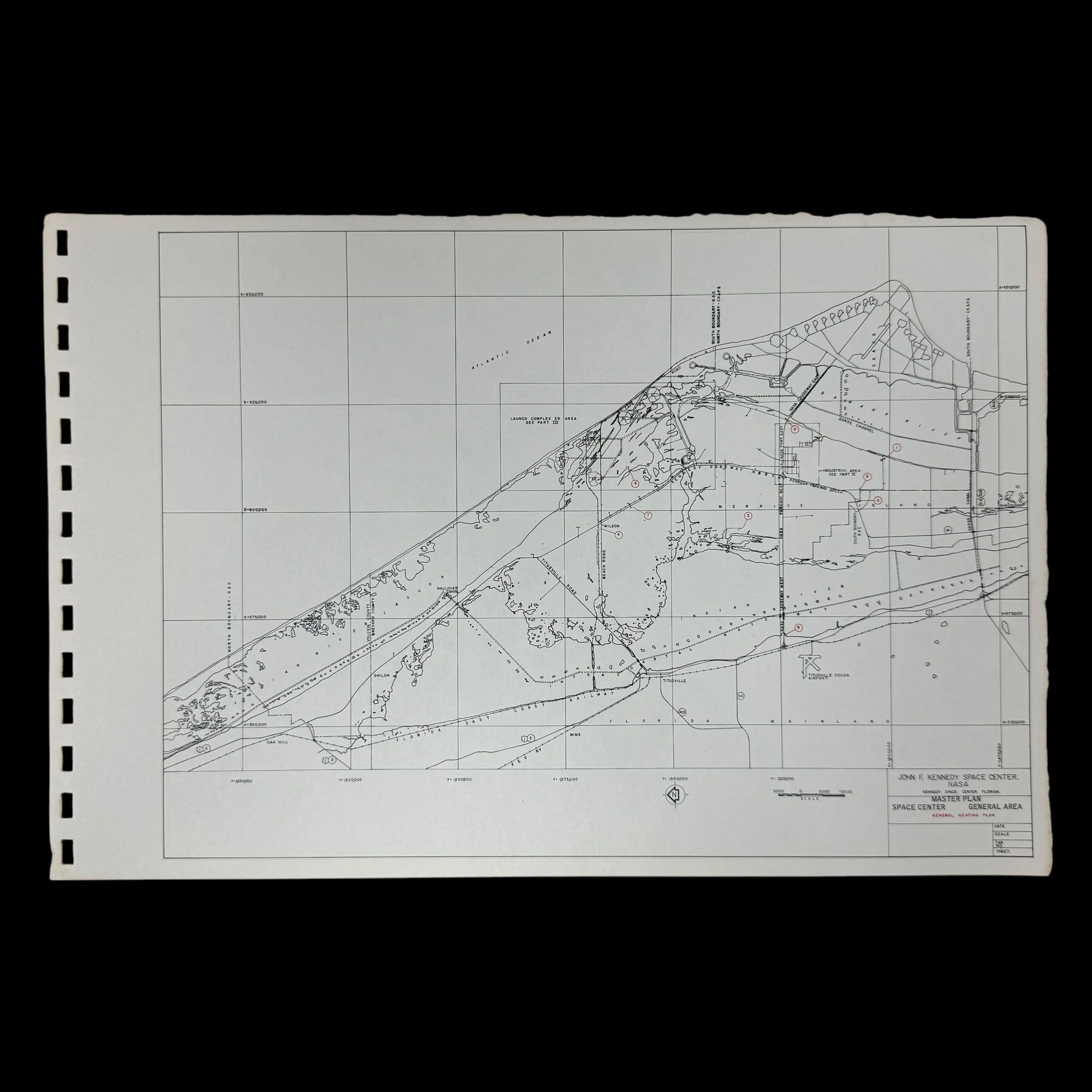
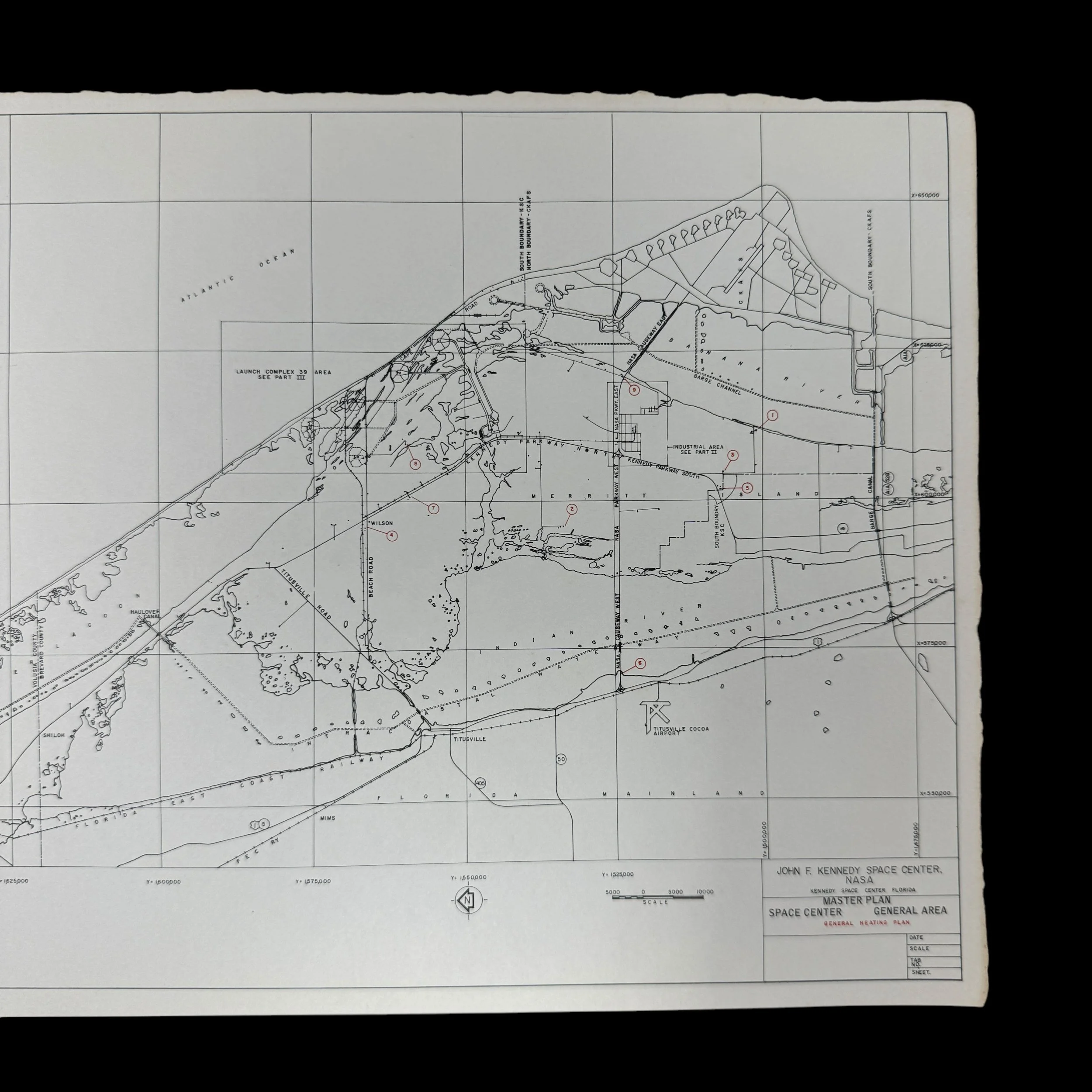
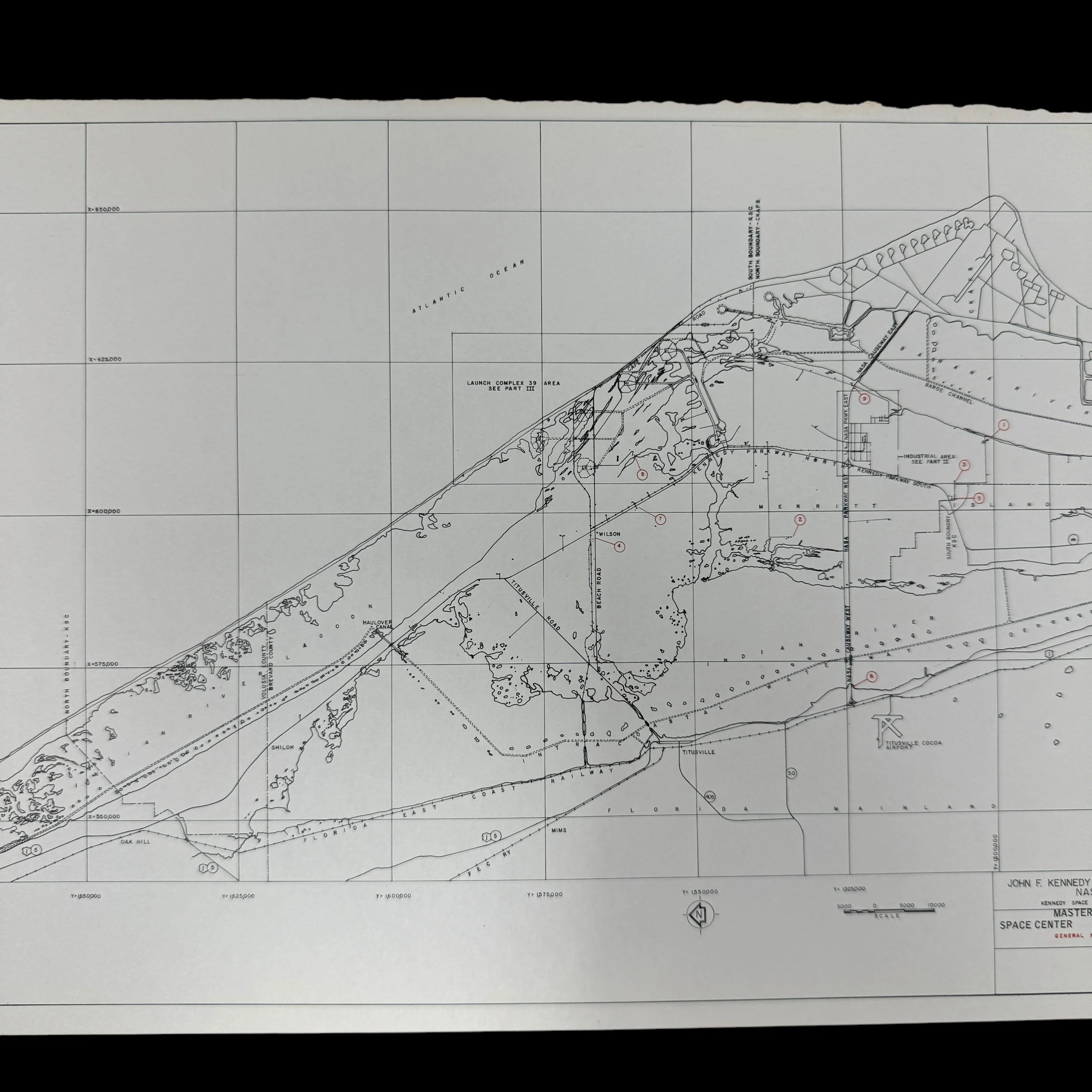
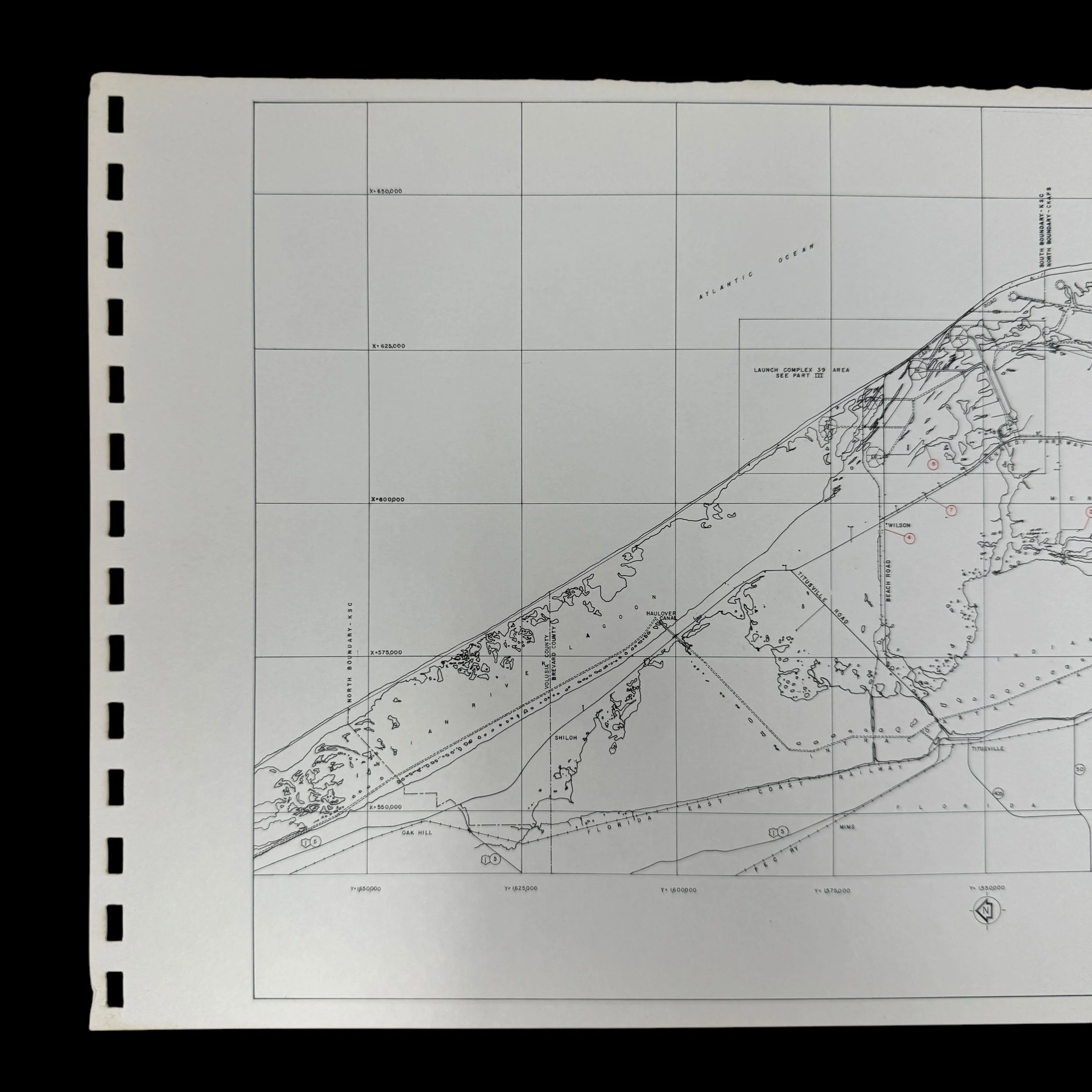
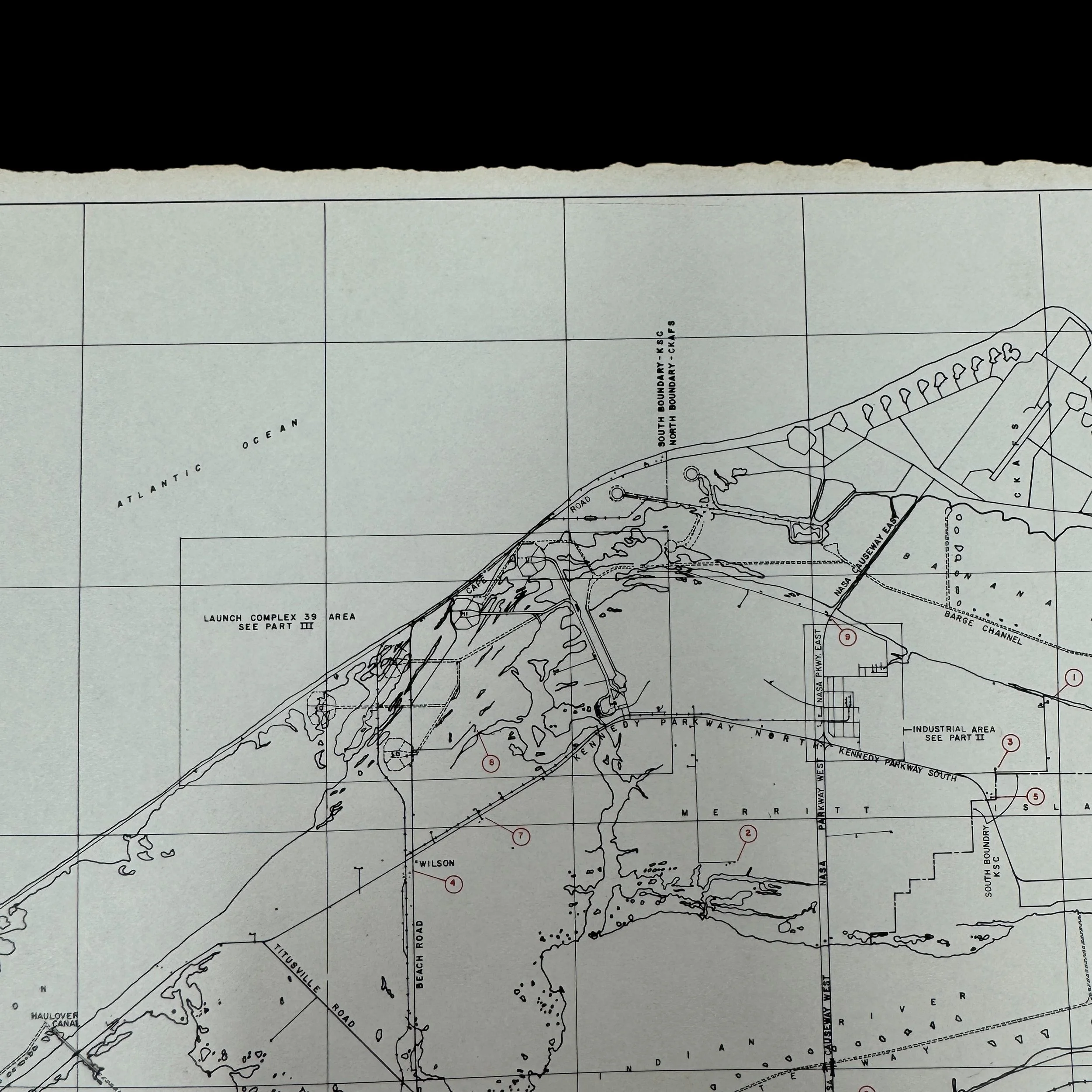
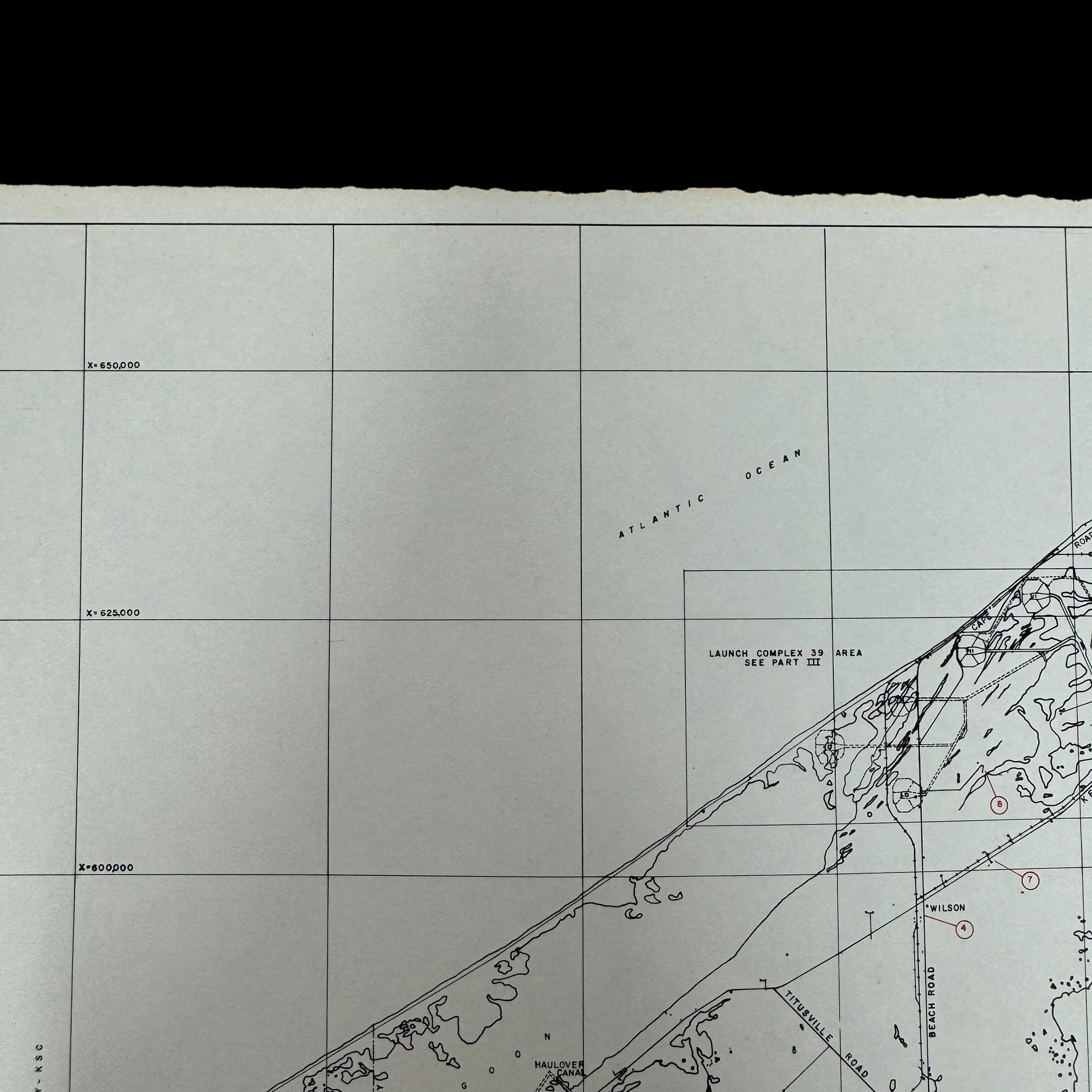
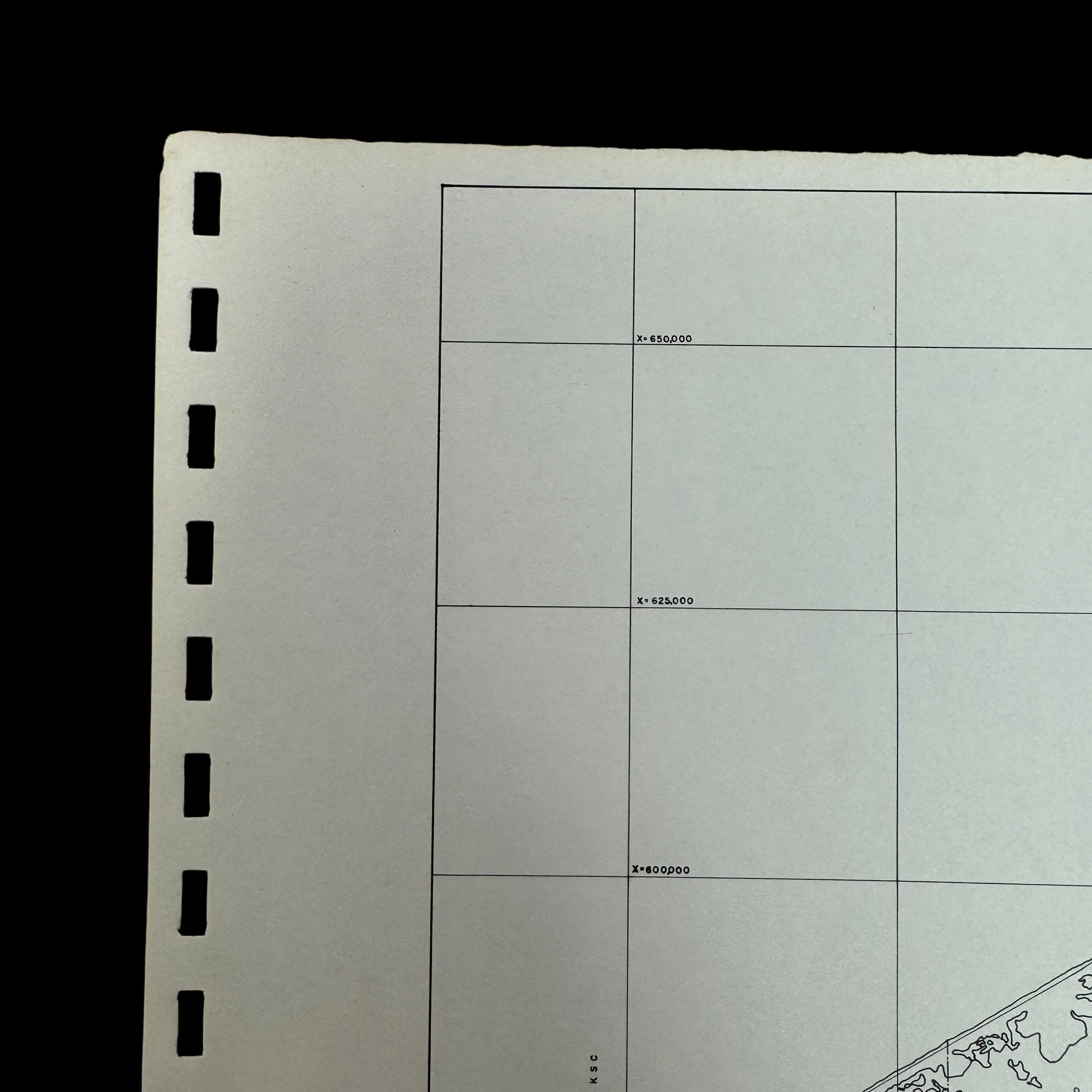

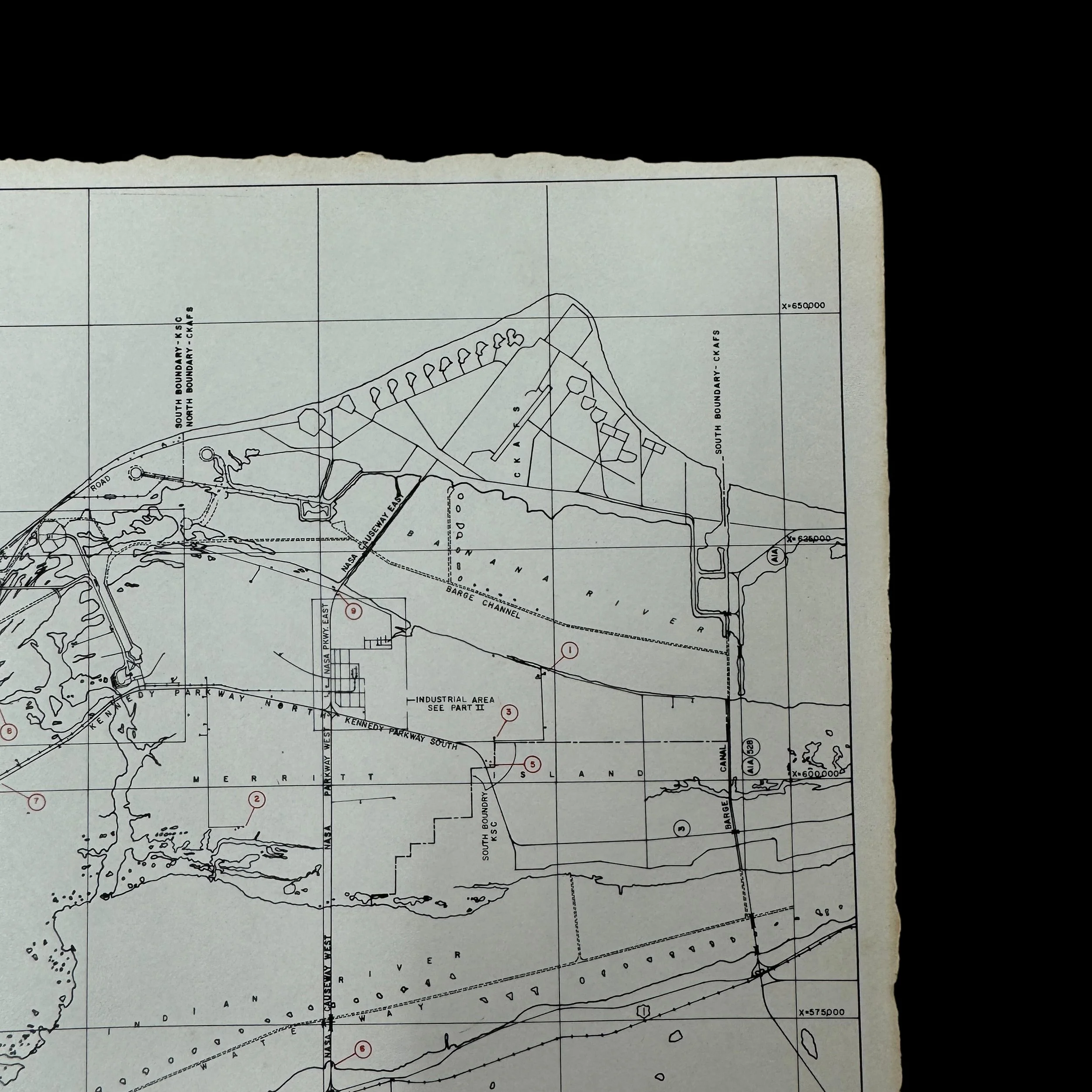
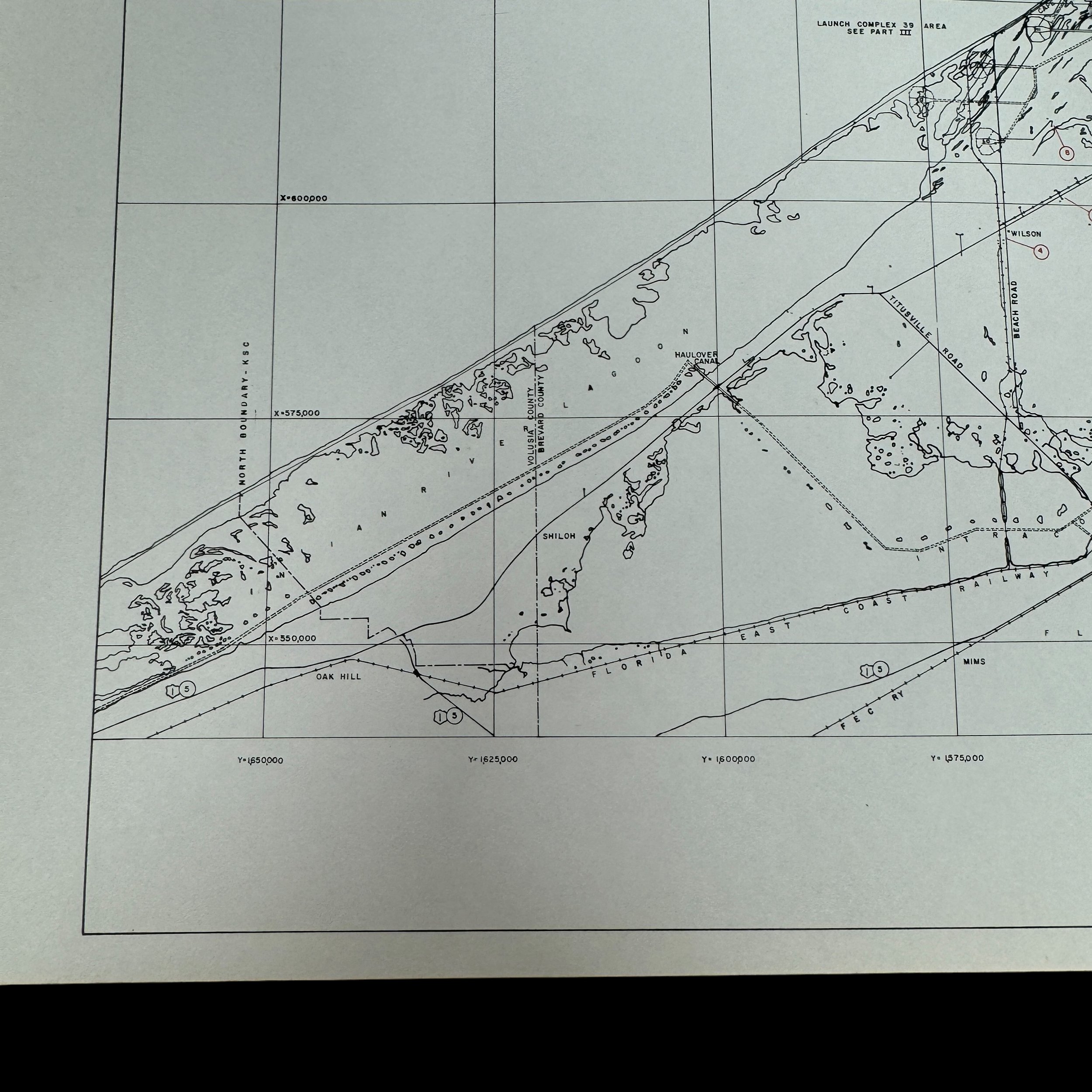
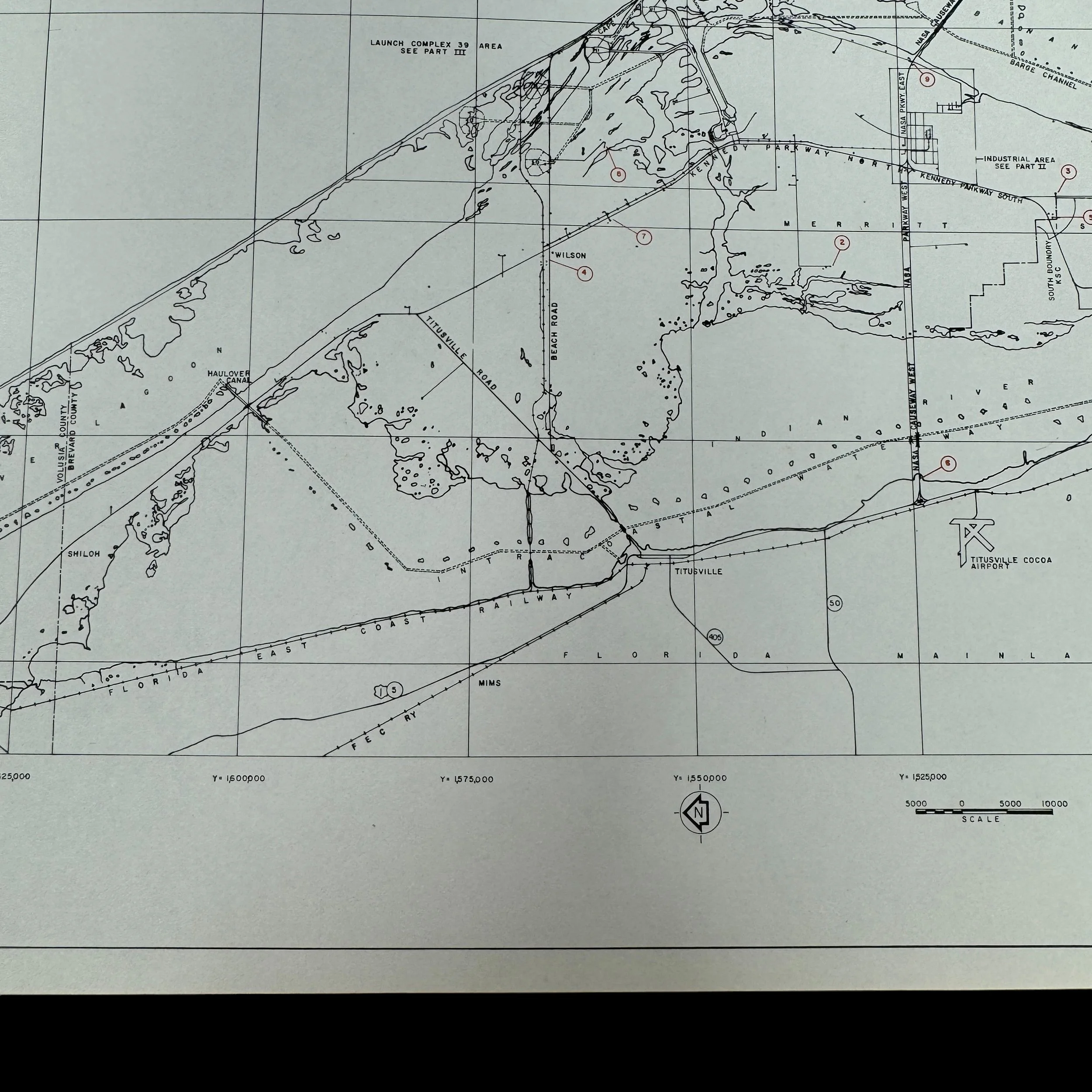
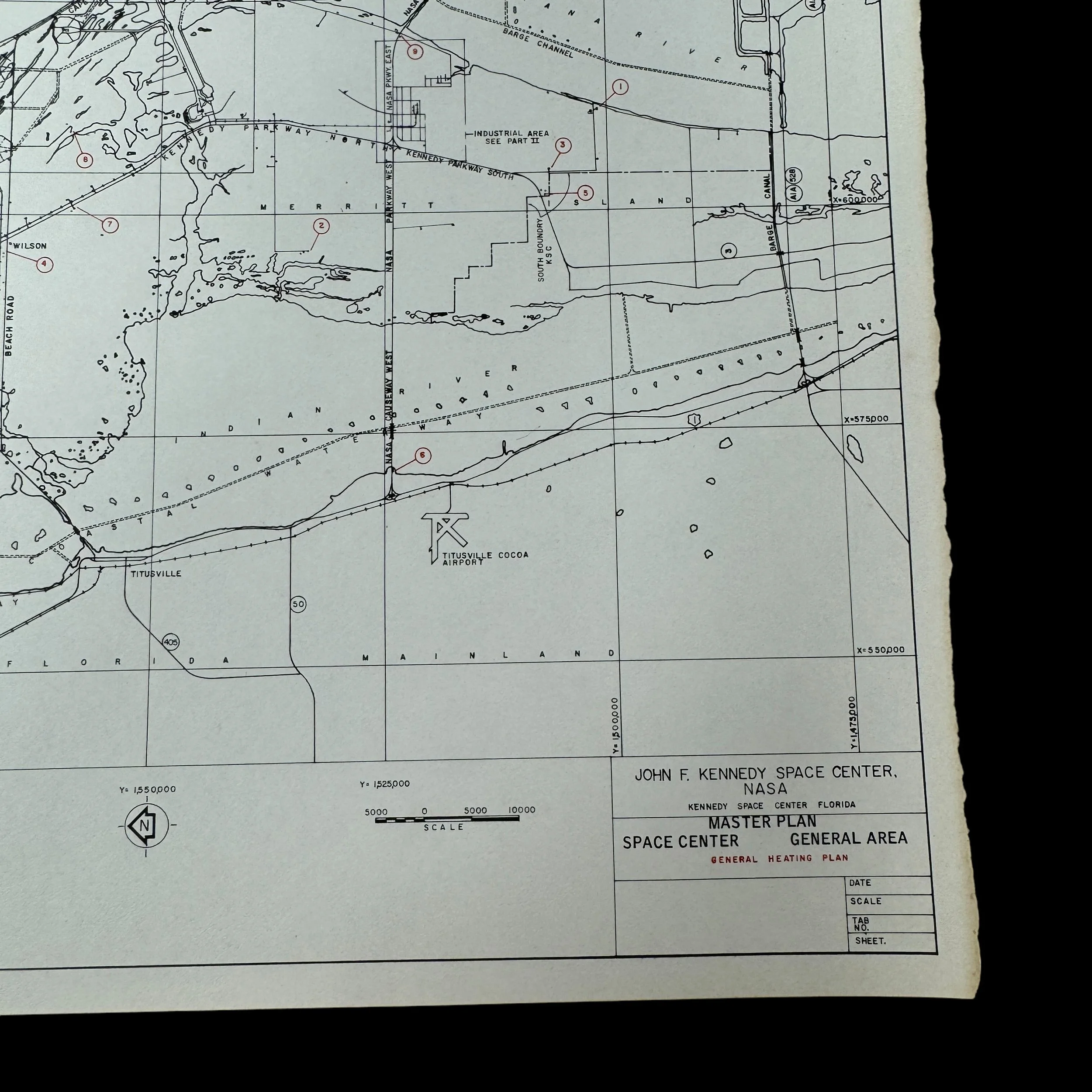
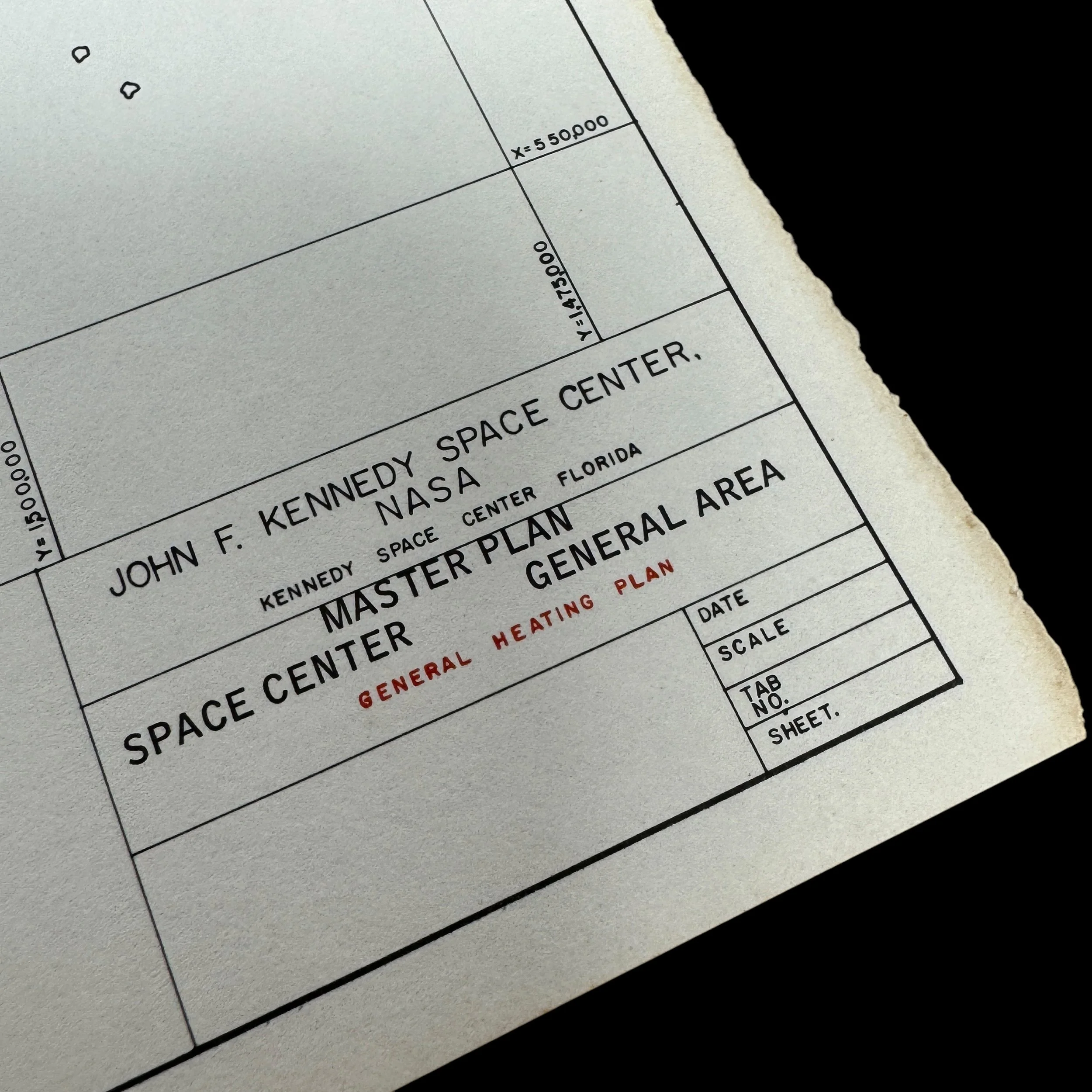
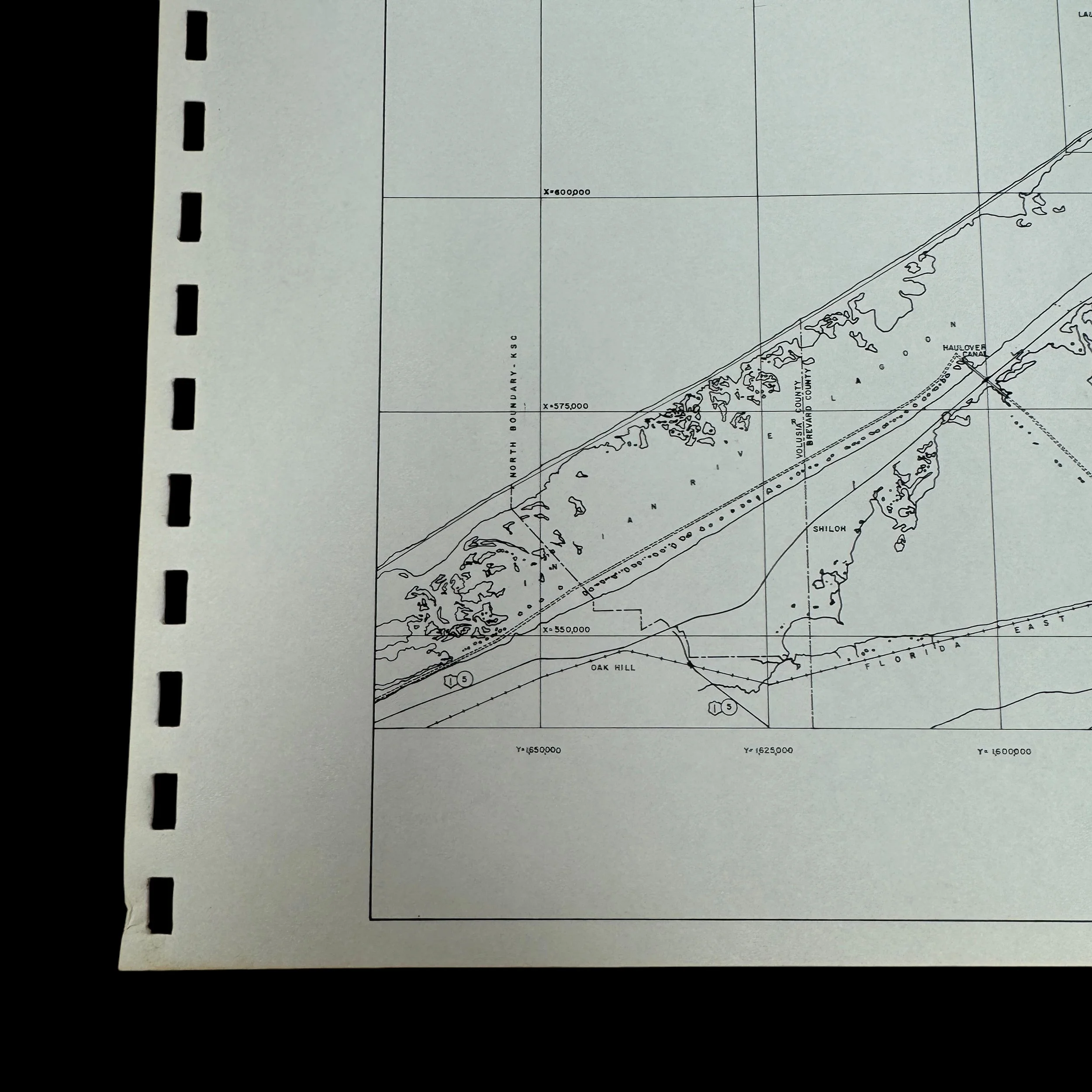

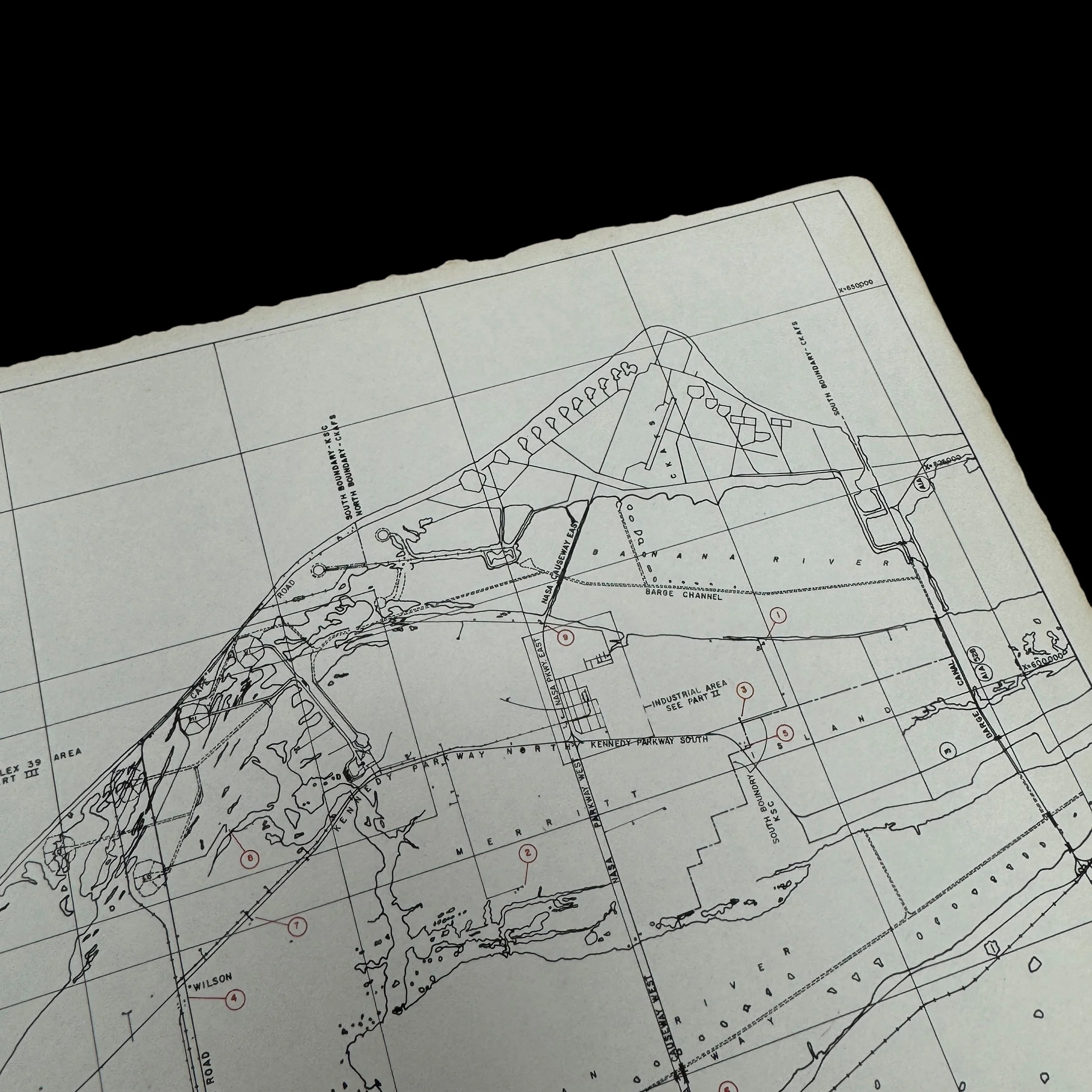
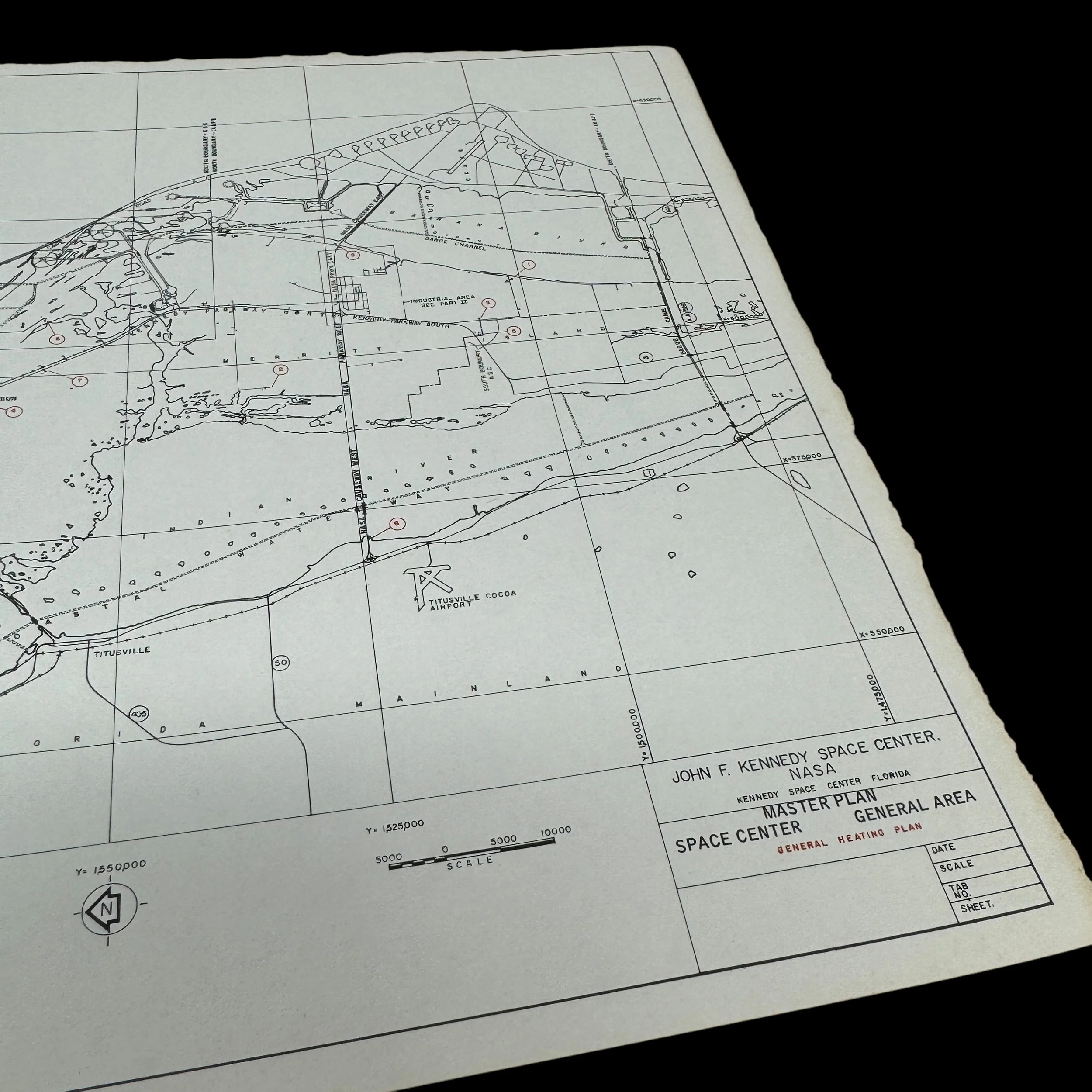

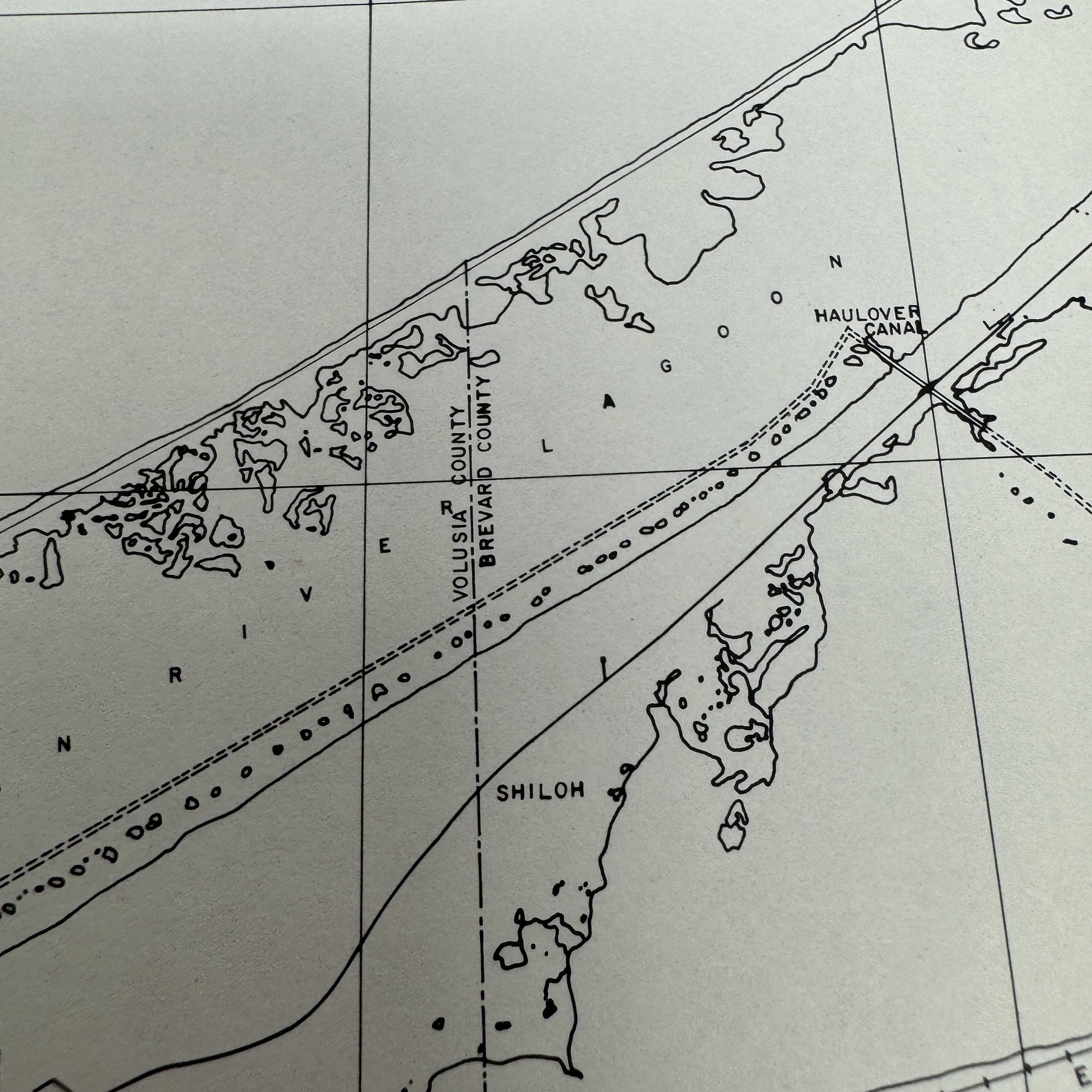
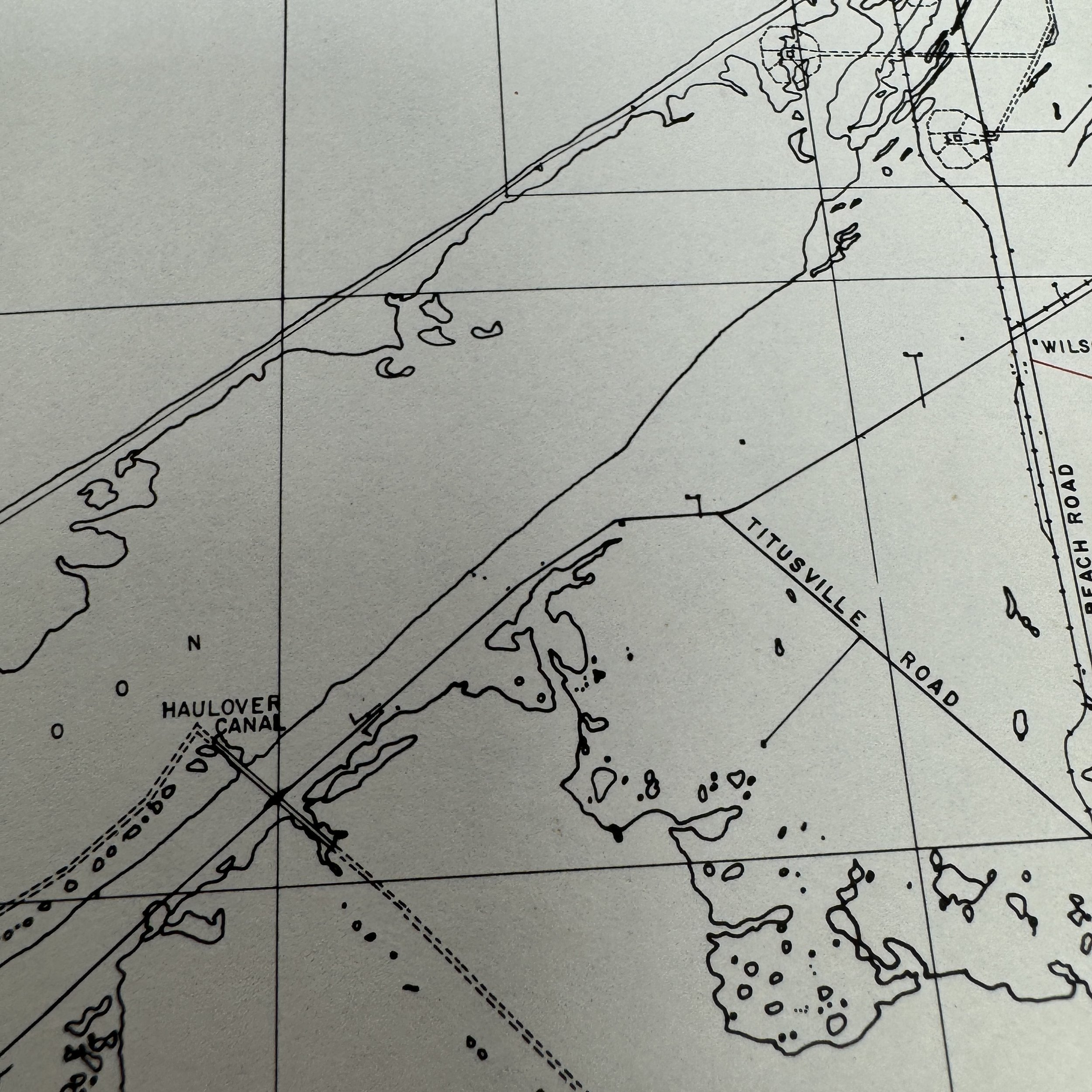
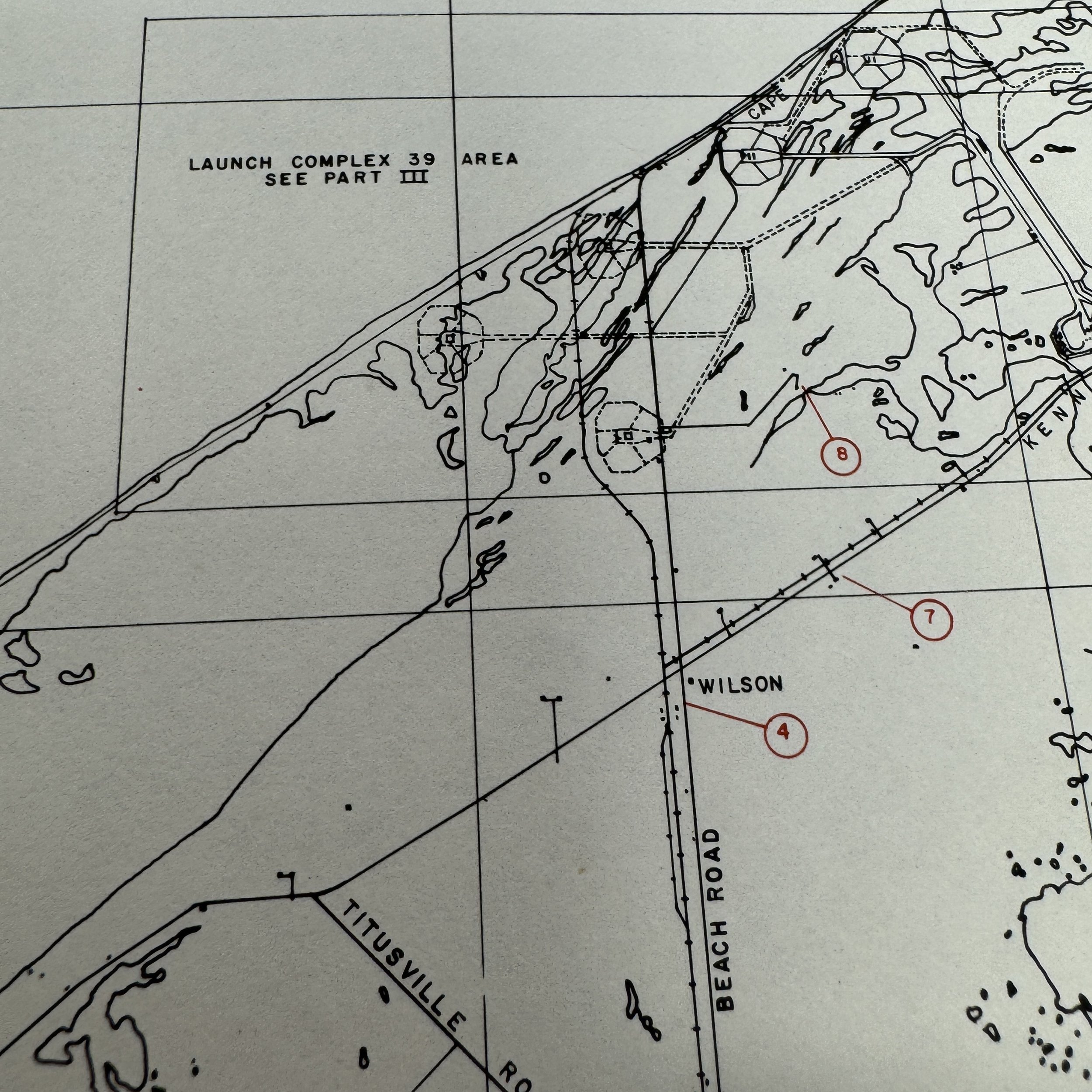

VERY RARE! 1965 Apollo Program John F. Kennedy Space Center “MASTER PLAN - SPACE CENTER GENERAL HEATING PLAN” NASA Expansion Blueprint*
HEATINGComes with a hand-signed C.O.A.
*The Kennedy Space Center was integral to the Apollo program’s success. The first major test of the Saturn V rocket occurred at LC-39A in 1967 with Apollo 4, an uncrewed mission to test the rocket’s capabilities. Following successful tests, KSC launched the crewed Apollo 7 mission in 1968, which tested the spacecraft's systems in Earth orbit. KSC’s most historic moment came on July 16, 1969, when Apollo 11 launched from LC-39A. Millions watched as the Saturn V rocket lifted off, carrying the crew that would make humanity’s first lunar landing. The mission was a monumental success, and the center continued to support subsequent lunar missions, culminating in Apollo 17, the last crewed lunar mission, in 1972.
Size: 8 × 11.75 inches
Type: Original NASA Early Apollo Program John F. Kennedy Space Center master site plan expansion blueprint for upcoming Apollo lunar missions.
Date: 1965
This incredibly rare and museum-grade National Aeronautics and Space Administration (NASA) artifact is an original 1965 dated early Apollo Program master plan blueprint for the John F. Kennedy Space Center. Titled “MASTER PLAN - SPACE CENTER GENERAL HEATING PLAN” this master blueprint details the 1965 expansion of the originally named Launch Operations Center (LOC) from its beginning construction in 1962 to the infrastructure needed for launching the Apollo Program Saturn V rocket, the powerful vehicle designed to carry astronauts to the Moon. The site covered approximately 144,000 acres, encompassing launch pads, a massive Vehicle Assembly Building (VAB), and a network of transportation and support facilities.
1965 was a critical year for the Kennedy Space Center as NASA accelerated its preparations for the Apollo program. At this point, the space center was still under construction, and NASA was working against the clock to complete the facility's major components such as the Vehicle Assembly Building (VAB), The Launch Pads Complex 39A and 39B, Crawler-Transporter, and Infrastructure Development. The developments and activities that took place in 1965 laid the foundation for the successful Apollo missions that would follow later in the decade.
As 1965 drew to a close, the Kennedy Space Center was well on its way to becoming the world’s premier launch facility. The efforts made in this year, including the near-completion of the VAB and the development of the launch complexes, ensured that NASA was on track to meet President Kennedy’s goal of landing on the Moon by the end of the decade. In subsequent years, the Kennedy Space Center would continue to evolve and expand, playing a vital role in the Gemini missions, the Apollo program, and later, the Space Shuttle program.
The Kennedy Space Center’s legacy extends beyond its infrastructure; it embodies the spirit of innovation, exploration, and perseverance that characterized the early days of NASA. The work done in 1965, in particular, demonstrated the nation’s commitment to achieving ambitious goals through collaboration, technological advancement, and sheer determination. This year stands as a testament to the foundational efforts that made it possible for humans to set foot on the Moon and for the United States to establish its leadership in space exploration.
This original 1965 Apollo era blueprint comes from the collection of NASA employee who was a part of the John F. Kennedy Space Center expansion to support the future Apollo lunar missions.
FULL HISTORY: John F. Kennedy Space Center (KSC)
The John F. Kennedy Space Center (KSC), one of the most iconic launch sites in the world, has been at the forefront of space exploration for over six decades. Located on Merritt Island, Florida, KSC is NASA's primary launch center for human spaceflight and has played a critical role in every major U.S. space program, including the Apollo missions, Space Shuttle program, and most recently, Artemis missions aimed at returning humans to the Moon. This detailed history traces the center's conception, construction, facilities, launch complexes, and its monumental contributions to space exploration.
Conception and Early Development (1950s - 1960s)
The origins of the Kennedy Space Center trace back to the early days of the U.S. space program. In the 1950s, the U.S. government, eager to compete with the Soviet Union during the Cold War's space race, established a facility on Cape Canaveral for missile testing and satellite launches. The site's proximity to the equator allowed rockets to take advantage of the Earth's rotation, making it an ideal location.
With President John F. Kennedy’s 1961 commitment to land an American astronaut on the Moon before the end of the decade, it became evident that the existing facilities at Cape Canaveral were insufficient to support the massive rockets needed for the Apollo program. In 1962, NASA acquired more than 140,000 acres on Merritt Island north of Cape Canaveral to create a new, expansive launch facility. The new center, initially named the Launch Operations Center, was designed to support the Saturn V rockets and the Apollo program.
Construction on the site began in earnest in 1962, and the new complex was officially renamed the John F. Kennedy Space Center on November 29, 1963, just days after Kennedy’s assassination, as a tribute to the president’s vision of lunar exploration.
Construction and Facilities
The construction of Kennedy Space Center required the development of numerous facilities to support the assembly, testing, and launching of the Saturn V rockets and other spacecraft. The most significant facilities include:
1. Vehicle Assembly Building (VAB)
One of the most iconic structures at KSC, the Vehicle Assembly Building (VAB), was completed in 1966. Standing at 525 feet tall, the VAB is one of the largest buildings in the world by volume. It was originally designed to stack the stages of the Saturn V rocket vertically, preparing them for launch. The VAB is equipped with massive cranes to hoist the rocket sections and was later modified to support the assembly of the Space Shuttle and, more recently, the Space Launch System (SLS) rocket for the Artemis program.
2. Launch Complex 39 (LC-39)
To accommodate the Apollo missions, two major launch pads were constructed at KSC:
Launch Complex 39A: The first of the two pads, LC-39A, became operational in 1967. It was specifically designed for the Saturn V and was used for the majority of Apollo missions, including the historic Apollo 11mission that carried astronauts Neil Armstrong, Buzz Aldrin, and Michael Collins to the Moon in 1969.
Launch Complex 39B: This pad was completed shortly after LC-39A and served as a backup. LC-39B was used for Apollo missions and later modified to support the Space Shuttle and, eventually, the Artemis lunar missions.
These launch pads, equipped with mobile service towers and flame trenches, were essential for accommodating the massive exhaust forces and extreme temperatures generated by the rockets.
3. Crawler-Transporters
To move the Saturn V rockets from the VAB to the launch pads, NASA built two crawler-transporters, each weighing about 6 million pounds. These colossal vehicles were designed to transport the rockets along a specially designed crawlerway to ensure that the massive loads were supported. The crawler-transporters remain in use today, having been upgraded to carry the SLS rockets for the Artemis program.
4. Operations and Checkout (O&C) Building
The O&C Building is where NASA prepared astronauts for missions and tested spacecraft systems. Built in the 1960s, it remains a crucial facility for astronaut training, spacecraft assembly, and testing.
5. Launch Control Center (LCC)
The Launch Control Center, located adjacent to the VAB, serves as the nerve center for launch operations. The LCC was initially designed for the Apollo program and was later adapted for Space Shuttle launches. The control rooms within the LCC are where engineers and mission managers monitor and execute the countdown procedures.
Apollo Program and Historic Missions (1960s - 1970s)
The Kennedy Space Center was integral to the Apollo program’s success. The first major test of the Saturn V rocket occurred at LC-39A in 1967 with Apollo 4, an uncrewed mission to test the rocket’s capabilities. Following successful tests, KSC launched the crewed Apollo 7 mission in 1968, which tested the spacecraft's systems in Earth orbit.
KSC’s most historic moment came on July 16, 1969, when Apollo 11 launched from LC-39A. Millions watched as the Saturn V rocket lifted off, carrying the crew that would make humanity’s first lunar landing. The mission was a monumental success, and the center continued to support subsequent lunar missions, culminating in Apollo 17, the last crewed lunar mission, in 1972.
Skylab and Apollo-Soyuz (1970s)
After the Apollo program, KSC supported the launch of Skylab, the United States' first space station. The station’s modules and crews were launched using Saturn rockets from LC-39. The Apollo-Soyuz Test Project in 1975, a joint mission with the Soviet Union, marked the final flight of an Apollo spacecraft. It was launched from KSC and represented a symbolic end to the space race and the beginning of international cooperation in space.
Space Shuttle Era (1981 - 2011)
The introduction of the Space Shuttle program in the early 1980s transformed Kennedy Space Center into the heart of America’s human spaceflight operations. The shuttle’s reusability required significant modifications to existing facilities:
LC-39A and LC-39B were adapted to accommodate shuttle launches, including the construction of Fixed Service Structures and Rotating Service Structures that provided access to the shuttle and its payload.
The VAB was retrofitted to assemble the Shuttle's External Tank and Solid Rocket Boosters with the Orbiter.
The first shuttle, Columbia, launched from LC-39A on April 12, 1981. Over the next three decades, KSC hosted 135 shuttle launches, including historic missions like:
STS-6, the deployment of the first Tracking and Data Relay Satellite (TDRS).
STS-7, the first mission with a female astronaut, Sally Ride.
STS-31, which launched the Hubble Space Telescope.
STS-88, the first mission to assemble the International Space Station (ISS).
KSC also experienced the tragedies of Challenger (1986) and Columbia (2003), leading to significant safety overhauls and program reviews.
Post-Shuttle Era and Artemis Program (2011 - Present)
After the Space Shuttle program ended in 2011, Kennedy Space Center transitioned to support a new era of space exploration. The facilities at KSC were upgraded to accommodate NASA’s next-generation launch systems:
LC-39A was leased to SpaceX and modified for Falcon 9 and Falcon Heavy launches, making it a hub for commercial and crewed missions, including the Crew Dragon missions to the ISS.
LC-39B was refurbished for NASA’s Space Launch System (SLS), the most powerful rocket built since the Saturn V, aimed at carrying astronauts to the Moon under the Artemis program. Artemis I, an uncrewed test flight, launched in 2022 from LC-39B, marking a new era of lunar exploration.
Kennedy Space Center’s Continued Legacy
Today, KSC continues to evolve as a multi-user spaceport, supporting a range of commercial and government missions. With the Artemis program, KSC is again at the center of efforts to explore the Moon and beyond. The planned lunar landings, crewed missions to Mars, and commercial space operations underscore KSC’s role as a pivotal launch site in advancing human spaceflight.
Kennedy Space Center’s long history of innovation and achievement highlights its crucial role in making humanity’s space exploration dreams a reality. From launching Apollo astronauts to the Moon, deploying the ISS, to supporting the new Artemis missions, KSC remains a cornerstone of NASA’s efforts to explore the cosmos.